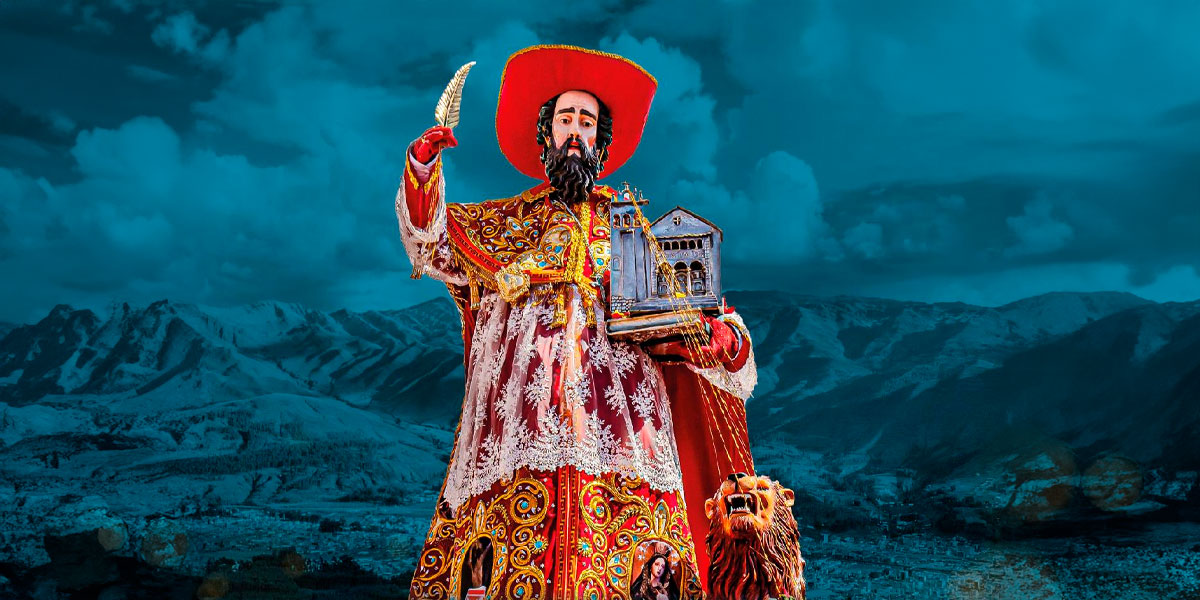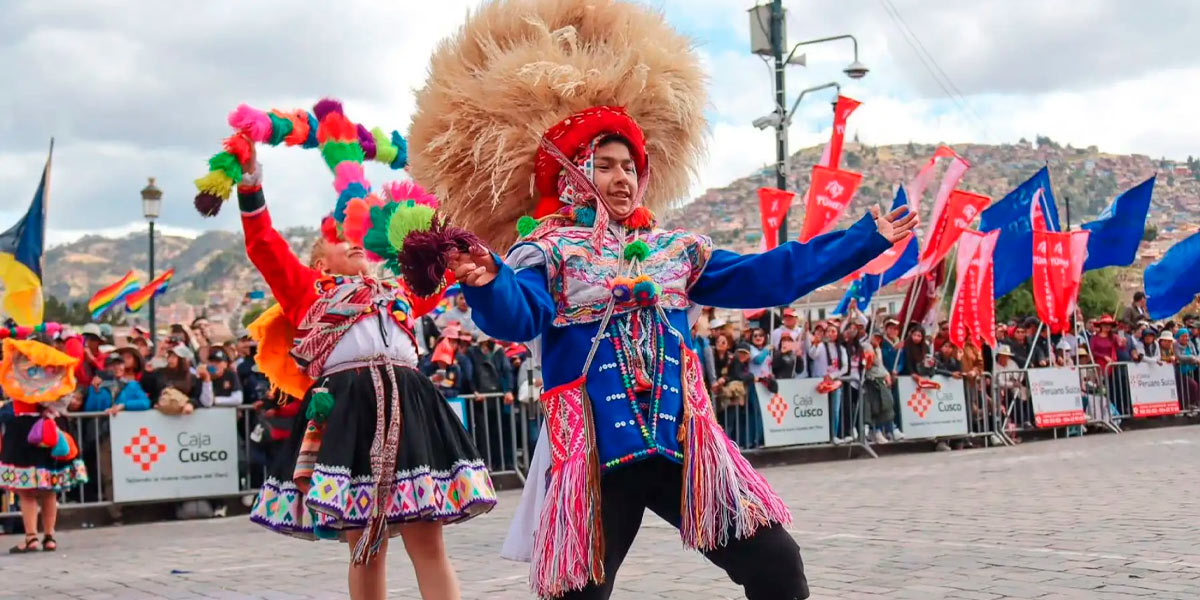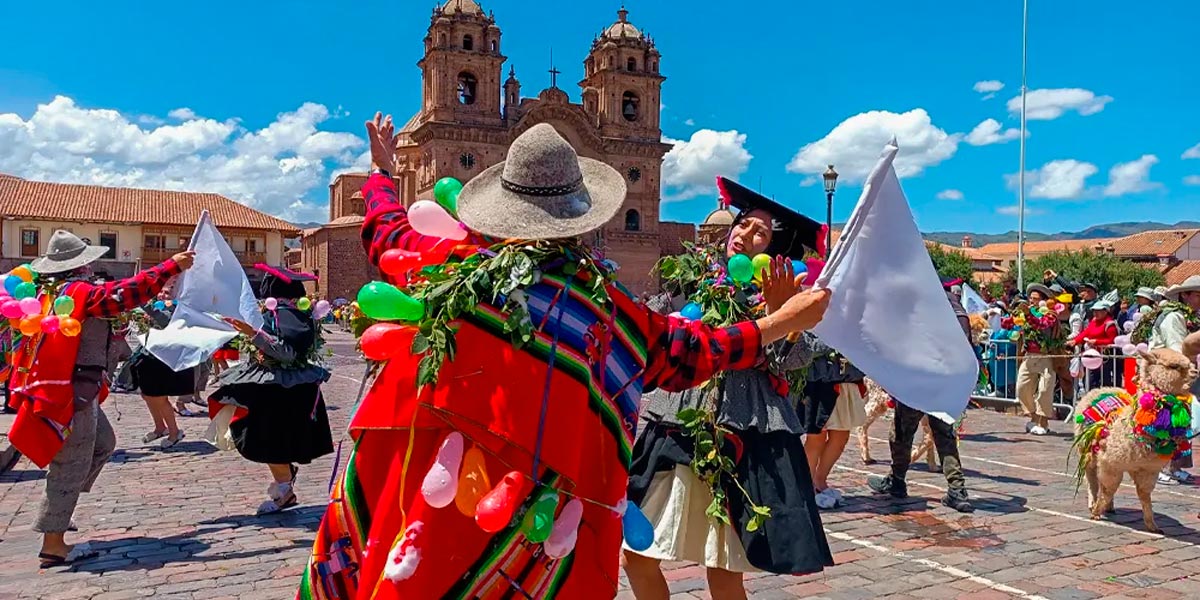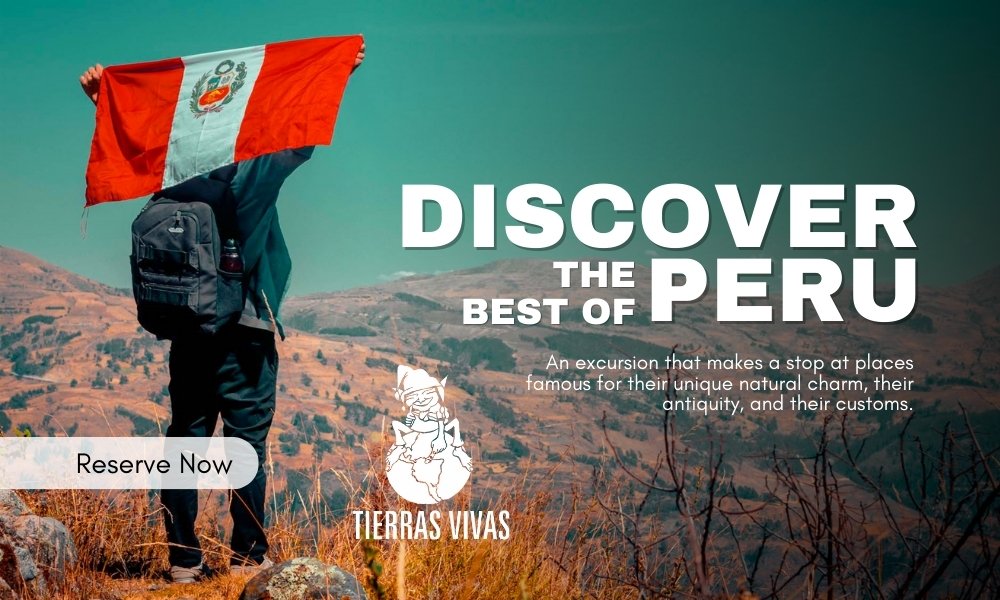Planning holidays to cusco involves organizing visits to archaeological sites, but for a complete immersion, it is essential to know its vibrant cultural calendar. Cusco is the epicenter of many traditional holidays in peru, and its celebrations are a visible manifestation of the mix between ancestral Andean beliefs and the Catholic traditions imposed during the colony. This mix defines the unique character of the festivals in cusco.
Throughout the year, the city is home to many festivals. Many of them honor a patron saint, but they have absorbed rituals and dates from the Inca agricultural calendar. Events like Corpus Christi, Holy Week or the procession of the Lord of the Tremors are not just religious events; they are massive folk expressions that involve music, traditional dances and special food, involving the entire population.
While the Christian calendar marks many of these celebrations, the greatest expression of Cusco folklore is the Inti Raymi the Festival of the Sun, which is celebrated every June 24. This guide is designed to provide information about the most important festivals in the city, helping travelers understand what to expect and how to plan their cusco peru holidays to match these cultural experiences.
Cusco Holidays Festivals
JANUARY
- 01: Delivery or Change of Rods Ceremony in which the communal authorities (the Varayoc) effect the change of command or transmission of power, which lasts one year.
- 01 to 06: Exhibition of Typical Births. The churches and houses of Cuzco present an incredible variety of births.
- 06: The Descent of the Three Wise Men. Religious festival held in Ollantaytambo.
- 14: San Antonio de Abad, Acomayo. According to popular tradition, he is considered the Pattern of the Chancheros. The celebrations in honor of this saint can last up to a week.
- 19 to 20: Perachapchi or Pera Chapchy Patronal Feast of San Sebastián. There are bullfights, processions and folklore with typical dances. Men wear flowers in their hats.
- 20: Ch'iriaje. Ritual fight between the inhabitants of the communities of Checa and Quehue, in the district of Yanaoca, province of Canas. These are faced in a warrior game to promote the fertility of the earth. The winning community is the one that occupies the largest amount of land. The men are armed with slings, leather lashes and sticks, and they wear vests adorned with flowers. The women help by caring for the horses and collecting stones, as well as encouraging the men singing.
- 20: Virgin of Bethlehem. Considered the patron of the city of Cusco, the image is one of the most ostentatious for the wealth of their jewelry.
FEBRUARY
- Moveable date: Carnival celebrations are celebrated in the different towns of the Sacred Valley of the Incas.
- 2: Tocto Fights. It is carried out in the place called Tocto, located between the districts of Yanaoca and Livitaca, in the province of Chumbivilcas. It lasts three days, in which the struggles to gain more cultivation land are evoked. The first day the participants settle in the place, the second day individual fights begin, and then groups of five and up to ten people are formed. After eating and drinking they all face each other until the third day, in which they pick up their wounded and perform the K'aswa (rounds where losers and winners celebrate).
- 2: Day of La Candelaria.Traditional agricultural and handicraft fair. Includes bullfighting.
- 27: Tinca de Vacas. This celebration, linked to the image of the Apostle Santiago, has as its central act the marking of cattle. The mark or signal is only celebrated by the families that own livestock, who invite visitors to eat beef or llama, and to drink chicha. It's an important party in Quico. Chaca Saturday Costumbrista party held one day before the Sunday game of carnivals, this takes place in the city of Yauri capital of the province of Espinar in the department of Cusco. In this carnival festival the contests of the different comparsas (conformed by duets, trios and quartets of Chukus and single women) take place in the so-called tupay, participating in this way the districts of the province, the peasant communities of the district and the neighborhoods, making this holiday a total and picturesque joy; becoming an unforgettable experience. This same party of tupay, also takes place in the different districts of the rest of the province of Cusco.
MARCH
- 23: The Spanish regimentation of the city of Cusco.
- 30 to 31: Sara Raymi Traditional trade fair in honor of the festivities of the Purified Virgin of Kaninkunka, province of Quispicanchi. Second fortnight of March to the first week of April: (Moveable date) The Holy Week festivities begin. The processions stand out.
APRIL
- 2nd fortnight from March to the 1st week of April: The festivities continue for HOLY WEEK: The celebration of Holy Week in Cuzco is particular, it is observed the pilgrimage of many believers of the town, as national and foreign visitors.
MAY
- 2: The Cruz Velacuy festival is the day of the Catholic crosses in Cusco and in almost all the Andean towns, the festivity lasts until May 4 (date that can not be specified, but alternates between May and June) 1st Week of May: Festival of the Lord of Qoyllurit'i, Qoyllor Rit'i, Place: Province of Quispicanchis, district of Ocongate. Sinakhara Mountain. It is the festival of the Lord of Ice. A rite whose external symbol is the image of Christ, but its underlying object is the integration of man with nature. It consists of a massive pilgrimage to the top of the snowy Ocongate. It gathers more than 20,000 faithful in a first walk of 8 Kms.
- 08: Folk festival Qheswa Chaca, in the Apurímac Canyon.
- 21: Craft festival. Raqchi Contest of folk dances and native beauty in the archaeological zone of Raqchi.
- 23: Jubilee Week of Cusco. Great parade of all the institutions that make up the Cusco society showing the most beautiful costumes, dances and choreography typical of Cusco, this activity lasts more than two days. Fireworks. Serenades to the city.
JUNE
- 3: Lord of Torrechayoq Province of Urubamba. The origins of this festival go back to the year 1867 when a huge cross was built and placed in the snow and an opening Mass was celebrated on a stretch of the Urubamba - Lares highway. Years later it was taken to the Ch'ynaqasa pass, and a sanctuary is built in the city of Urubamba, where it is worshiped. In addition to the mass, the cross is taken out in procession with all its jewels. The celebrations include fireworks, parades of dances, bullfights and fights of navajeros roosters.
- 11: CORPUS CHRISTI (movable). Religious festival celebrated in the Plaza de Armas of Cusco. In it, 16 images from the 14 parishes or churches of the city participate in a procession. Previously, a huge coach covered entirely in silver runs through the streets. There is a combination of Andean and Catholic rites, the litter and the images are full of pomp and waste, which are shown in processions of Virgins and Saints of almost all the parishes. They are part of the processions, bands of musicians and folk groups. The typical and classic dish of this festivity is the Chiri Uchu. (guinea pig roasted with jerky and toasted corn). 1st Fortnight of June: Festival of OllantayRaymi. Staging of the drama Ollantay, Danzas y Platos típicos.
- 23: Fiesta Pariente in the Wiraqocha, temple of the Inca of the town of Raqchi, the district of San Pedro province of Canchis.
- 24: INTI RAYMI. Staging of an ancestral rite that represents the harmonious relationship of man and the cosmic manifestations with the Sun. The party begins in Koricancha, and takes place in the winter solstice, then continues in the Plaza de Armas and most of it runs in the Saqsayhuaman esplanade, where a white or black flame is sacrificed, as an offering to the sun god. It is also considered the most important day of the city as it coincides with the festivities of Cusco. Staging that expresses the harmonious relationship of man with the Sun God, the highest divinity of the Incas. It is done at the winter solstice.
- 29: Feast of Saint Peter and Saint Paul In the parish of San Pedro, in Cuzco, and in the districts of those names of the province of Canchis.

Inti Raymi the Festival of the Sun
JULY
- CORPUS DE SANTIAGO: It is a religious festival that celebrates a mass and in which many beautiful dances are presented, as well as the typical dish of the festival: the Chiri uchu. It is celebrated in the square of the same name.
- SANTA ANA CORPUS: It is also a religious celebration celebrated in the parish of Santa Ana. It has a celebration of eve, mass of celebration, procession, presentations of dances, band of musicians and its typical plate is also the Chiri uchu.
- 16: The religious feast of Our Lady of Carmen is celebrated in the town of Paucartambo and in Pisac. Known as the Mamacha Carmen festival, it is a deeply rooted religious celebration, where happiness and pomposity are lavished. We recommend you visit the natural balcony of Tres Cruces, because from there you can see the unique and fantastic sunrise of the Cusco sun. The Virgen del Carmen is commemorated, not only with a procession, but also with music and dances. The festival of Paucartambo is considered as the best folkloric demonstration of the region. Province of Paucartambo, district of Paucartambo and other towns.
- 25 to 29: The Coffee Party. Celebrations of Quillabamba. Celebration of the anniversary of the Province of the Convention, whose capital is the city of Quillabamba. Every year, during this week, Miss Café or Miss Quillabamba is chosen; there are cockfighting championships, motocross competitions, as well as the Cocla Fair, where a musical festival with national and international artists is presented. Typical dishes made with products native to the area, fireworks, processions and parades.
- 31: Offerings or offices in each community in honor of the mama tierra.
- 31: Tinka of the cattle Christening ceremonies to the cattle in each community.
AUGUST
- 01: OFFERING TO THE EARTH. It is an Andean ritual performed throughout the region. Offerings (called payment) are made to Mother Earth, as a sign of retribution and reverence for the crops and food she provides to her people and animals. The payment can be with coca leaves, chicha de jora and huayruros seeds (mystical seeds of the jungle). This ritual marks the beginning of the new Andean year.
- CORPUS DE SAN CRISTÓBAL. Religious festival celebrated in the parish of San Cristóbal. They present dances accompanied by qaperos (musicians), on the eve and during the procession. The reason is the homage to the Patron Saint of the Transporters. At the party they offer various stews, but the main one is the well-known Chiri uchu. The performance of the Warachikuy: Inca party in Sacsayhuaman. Staging of the Warachikuy in Sacsayhuaman. It is in August and / or September.
- 30: Santa Rosa. Concentration of farmers to celebrate playing local music.
SEPTEMBER
- 14: Festival of the Lord of Huanca. It presents the pilgrimage of the city of Cusco, as well as the genre and livestock fair in the town of San Salvador. The history of the Lord of Huanca begins in 1675 when, according to Jesus Christ, he appeared in a cave before the Indian Diego Quispe, his live story inspired one of the best painters of the time to represent the image on the rock. The cult (recognized in 1779) has its central day on September 14 and until there, devotees arrive from remote parts of Peru and Bolivia, to cure their afflictions of body and soul.
- 30: the Feast of San Jerónimo in the district of San Jerónimo. It offers a whole tourist week, with different sports and cultural activities.
- CORPUS DE ALMUDENA. It is a religious festival celebrated in the parish or church of Almudena, where a procession and presentation of dances typical of Cusco and the altiplano area takes place. The Chiriuchu is also the main course.
- CORPUS DE SAN JERÓNIMO. Religious festival celebrated in the district of San Jerónimo. Religious services are carried out, mass of celebration, procession, presentation of several dances. This Saint is the patron of lawyers and tour guides.
- MONTH TOURIST. Tourism events are held with special programming that includes cultural, ecotourism and sports activities. It is open to anyone.

Feast of San Jerónimo
OCTOBER
- Continue the TOURIST MONTH 04, Virgin of the Rosary The Virgin of the Rosary is the patron saint of the order of the Dominicans, who were in charge of the brotherhood of the slaves during the colonial period, so many times their image is accompanied by an icon with the letter -S- held by a nail (symbol of black slaves).
- 31: Cristo Rey. The chives of the city send to celebrate masses, bring bands and folk dances in the district of San Sebastian. Return
NOVEMBER
- 01: Todos Santos. Baptisms of bread wawas, gastronomic specialties such as suckling pig, tamales, pouts and others.
- 02: Day of the souls. Pilgrimage to the cemeteries organized and carried out by the population of Cusco in general. Offerings to the dead in the cemetery, edible offerings in the temples, solemn masses.
DECEMBER
- 08: IMMACULATE VIRGIN. Cusco Religious festivity that has quite roots in the population, the celebrations are with novenarios, masses and presentations of native dances.
- https://www.tierrasvivas.com/img/cusco-holidays-06-1749.jpgthe Gastronomic Festival takes place in Andahuaylillas 24, the fair of
- 23 - 24: Santuranticuy (the Purchase of Saints) is presented. This event is celebrated since the arrival of the Spaniards to the city of Cusco, it is an occasion where images of worked clay are acquired, to -arm- Christmas births in each home. Currently, it is the oldest, largest and high quality popular art fair in Peru, it gathers exponents of crafts in different genres, such as goldsmithing, bordaduria, basketry, carving, coreoplasty, cerería, toys, among others. As in antiquity, it is done in the perimeter of the Plaza de Armas of Cusco.
About the End of Year Celebrations
The end-of-year festivities in Cusco are a time of high tourist demand, as many visitors seek to experience the local traditions. Although Cusco is a destination with options for various budgets, during these dates it is essential to book lodging and tours in advance.
- Christmas in Cusco: The Santirantikuy
Christmas in Cusco is experienced in a particular way. The city is decorated with lights and Andean motifs. The main celebration is the Santirantikuy fair ("Buy me a little saint"), one of the largest and oldest peruvian holidays and traditions in the country, which is celebrated in the Plaza de Armas every December 24th. Thousands of artisans from the entire region come to sell religious images, especially of the "Niño Manuelito" (Baby Jesus), as well as crafts, clothes, and plants to decorate the nativity scenes. At night, the traditional Misa de Gallo is held in the Cathedral and in the main churches. - New Year in Cusco
New Year is one of the busiest special holidays in peru in Cusco. On December 31st, thousands of people, including locals and tourists, gather in the Plaza de Armas to welcome the year. The most emblematic tradition consists of running laps around the plaza exactly at midnight, a custom that is done to ensure travel in the coming year. Other customs include eating twelve grapes and using yellow confetti ("pica pica"), which symbolizes good luck.
During these holidays in cusco, most of the hotels and restaurants in the city usually offer special Christmas dinners and New Year parties for their guests, so it is recommended to check and book these services in advance.
When is the best time to visit Cusco?
The best season is during the dry season, which covers the months April to the end of September. In October the rains begin and you can find Machu Picchu covered by clouds. If you travel in June, we recommend you to book the Inti Raymi 2026 Tour that takes place in June 24th, and also hike the Palcoyo Mountain Tour, which is an incredible Rainbow Mountain located in the Andes.
Cusco Tours
Many are the routes that pass through the Amazon, but none is like the Inca Trail Tours, the most famous pedestrian path in the Americas. After flying from the capital of Perú, Lima, you will arrive in Cusco to walk for four days along a path through forests and dense fog, millenary stone steps and discovering the ruins of ancient fortifications and Inca cities, and all the time enjoying majestic views.
- Salkantay Trek to Machu Picchu 5 days
- Hiking the Inca Trail to Machu Picchu 5 days
- Inca Quarry Trail 4 Days
- 2 Day Inca Trail Tour
- 2 Day Inca Trail with Camping
- 3 Day Inca Trail
- Vilcabamba Hike to Machu Picchu 6 days
- Choquequirao trek to Machu Picchu 9 days
- Ausangate trek 7 days
If you want to visit Machu Picchu, we recommend you to book your Machu Picchu Ticket in advance, so you will enjoy your Vacation in Machu Picchu without any problem.









